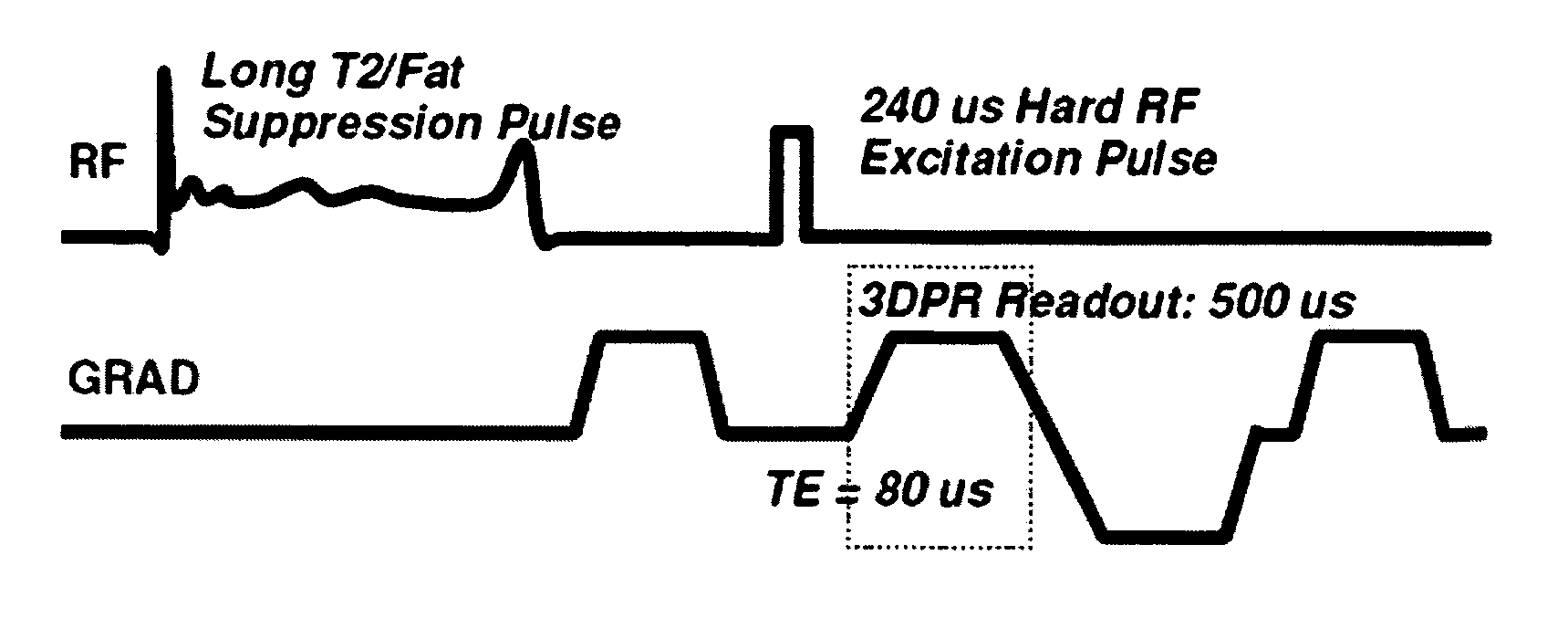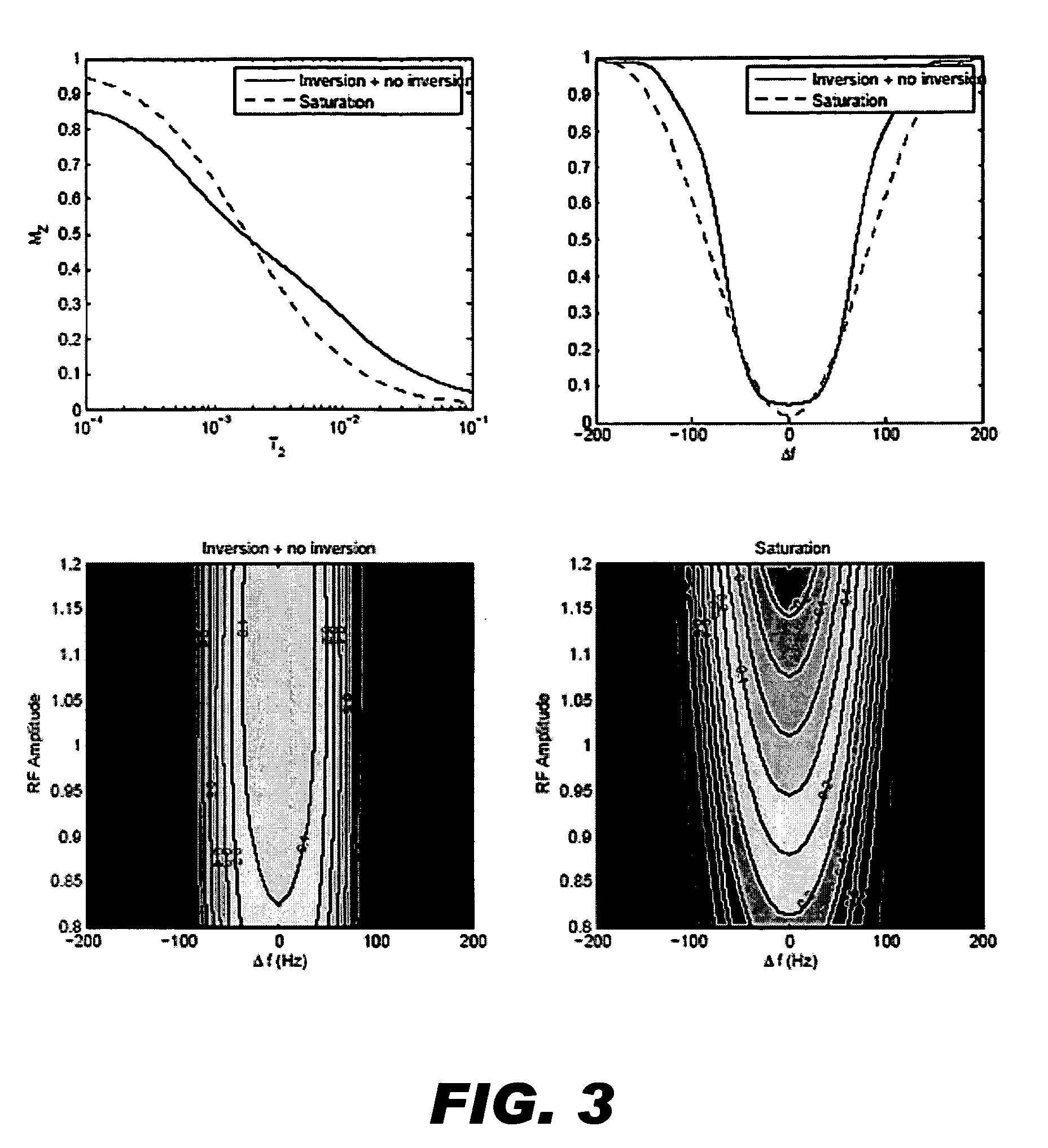RF pulses for long T2 suppression in MRI
a technology of rf pulses and mri, applied in the field of magnetic resonance imaging, can solve the problems of difficult imaging of short t2 species, such as brain and tendon tissue, in the presence of longer t2 species
- Summary
- Abstract
- Description
- Claims
- Application Information
AI Technical Summary
Benefits of technology
Problems solved by technology
Method used
Image
Examples
Embodiment Construction
[0028]The invention provides RF pulses that selectively invert or saturate longer T2 species without fully saturating shorter T2 species. The inversion pulses must have low amplitude and bandwidth so as not to invert shorter T2 species but with sufficient amplitude and duration to invert longer T2 species.
[0029]In one embodiment, adiabatic RF pulses are used to selectively invert longer T2 species without fully inverting shorter T2 species. Using adiabatic pulses offers the advantage of being extremely robust to any variations in RF amplitude. These variations are especially prevalent in surface coil excitation and can also be 20-30% in common head coils. All previous RF-based suppression methods are not robust to these variations and will suffer under adverse conditions.
[0030]To use these pulses for long-T2 suppression we propose a few methods. One method is to create a single image prepared with the inversion pulse and separate based on voxel phase. Longer T2s will be inverted and...
PUM
 Login to View More
Login to View More Abstract
Description
Claims
Application Information
 Login to View More
Login to View More - R&D
- Intellectual Property
- Life Sciences
- Materials
- Tech Scout
- Unparalleled Data Quality
- Higher Quality Content
- 60% Fewer Hallucinations
Browse by: Latest US Patents, China's latest patents, Technical Efficacy Thesaurus, Application Domain, Technology Topic, Popular Technical Reports.
© 2025 PatSnap. All rights reserved.Legal|Privacy policy|Modern Slavery Act Transparency Statement|Sitemap|About US| Contact US: help@patsnap.com



